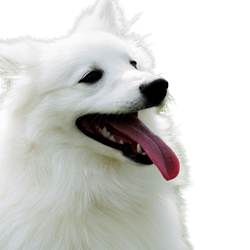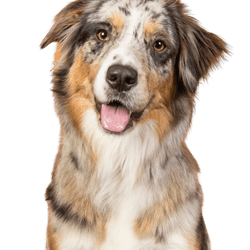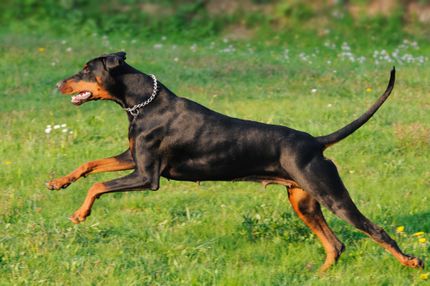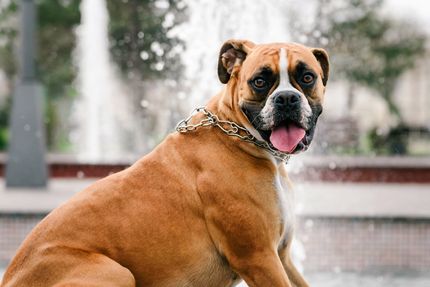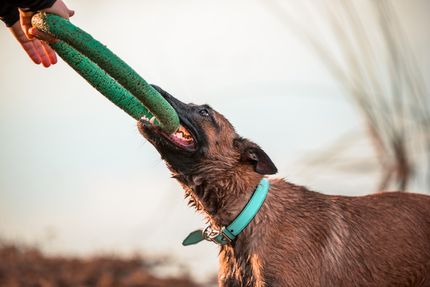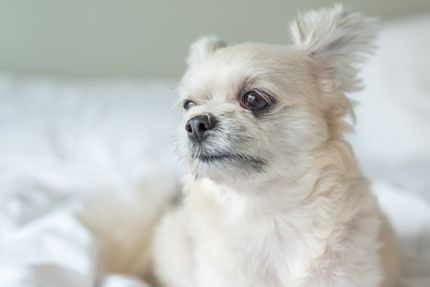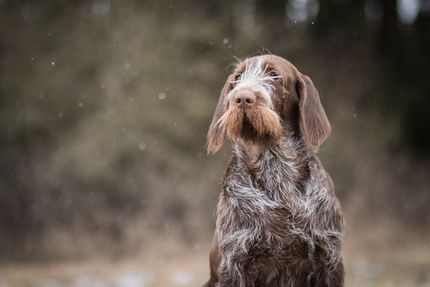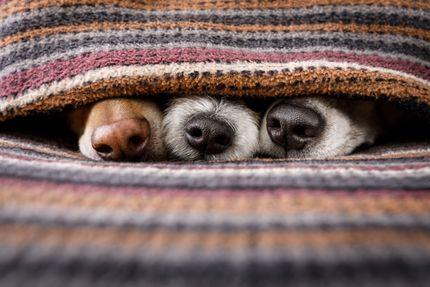Facts & Origin
Australian Eskimo - An active and intelligent mix of American Eskimo Dog and Australian Shepherd.
The Australian Eskimo, also known as the American Eskimo Dog and Australian Shepherd mix, is a fascinating cross between two intelligent and energetic breeds. The origin of this mix is in designer dog breeding, with the American Eskimo Dog originating in the United States and the Australian She pherd originating in Australia.
The Australian Eskimo is a relatively new hybrid breed that developed from crossing the American Eskimo Dog and the Australian Shepherd. This mix was created to combine the unique characteristics of both breeds to create a versatile companion dog.
Use and Suitability
In summary, the Australian Eskimo is an active and intelligent dog that requires a dedicated and loving caregiver to reach its full potential. With proper exercise, training and loving attention, he can become a loyal companion and an asset to family life .
| Alternate Name | - |
| Origin | USA |
| Life expectancy | 10 - 15 years |
| Care requirements | high-maintenance |
| Activity level | average - high |
| FCI group | not recognised |
| AKC group | not recognised |
| KC group | not recognised |
More American Eskimo Dog mixes
More Australian Shepherd mixes
Attitude, character and temperament of the breed
Possible character traits of the Australian Eskimo
The Australian Eskimo is likely to exhibit some positive character traits of both parent breeds. These could include:
- Intelligent and willing to learn
- Energetic and active
- Loyal and loving
- Protective and herding instinct
The Australian Eskimo is an extremely active and intelligent dog, suitable for people who enjoy spending time outdoors and being active. With his high energy level and willingness to learn, he is well suited for dog sports such as agility, flyball or Frisbee. He can also be a loving family dog who enjoys spending time with his owners.
Character
Care and health maintenance
As with all dogs, certain health problems can occur with the Australian Eskimo. It is important to realize that both parent breeds can be prone to certain diseases. Potential health problems include hip dysplasia, eye disease, and hereditary conditions. Regular veterinary examinations and a balanced diet are critical to maintaining the health of the Australian Eskimo.
Grooming the Australian Eskimo requires regular brushing to keep the dense coat free of tangles and matting. Special attention should be given to the coat during shedding to remove dead hair. In addition, the ears should be checked regularly for cleanliness and cleaned if necessary. Teeth should be brushed regularly and claws trimmed as needed.
What does this mixed breed look like?
The Australian Eskimo is usually a medium-sized dog with an athletic build and a shoulder height of about 45 to 55 inches. Appearance can vary from dog to dog, but they often have a dense, medium-length coat that can come in a variety of colors and patterns, including black, white, brown, and blue.
| Fur length | long |
| Fur | flat coated |
| Ear shape | Standing Ears |
| Tail | rolled up - fanned out |
| Anatomy | sporty, sporty |
| Size ♀ | 36 - 54 cm |
| Weight ♀ | 8 - 32 kg |
| Size ♂ | 36 - 58 cm |
| Weight ♂ | 8 - 32 kg |
| Suitable For | - |
Known Diseases
Hip dysplasia (HD)
Hip dysplasia (HD) is a genetic condition in dogs where the hip joint is not shaped properly. This leads to pain, stiffness and restricted movement.
Elbow dysplasia (ED)
Elbow joint dysplasia is a chronic disease complex of the elbow joint of fast growing dog breeds.
MDR1 defect
The MDR1 defect is a defect in the MDR1 gene that can occur in some breeds of dogs and in humans. This results in the deficient or absent synthesis of a certain protein which is an important component of the blood-brain barrier, leading to hypersensitivity to some drugs.
Progressive Retinal Atrophy (PRA)
Progressive retinal atrophy (PRA) is a slowly progressive death of the retina in dogs.
Numbness
Often occurs in old age.
FAQ
-
This hybrid breed has a short but dense coat and comes in white, cream or chocolate. They are usually described as spacious, energetic and friendly.
-
Since this is an intelligent and active hybrid breed, at least one hour of training should be scheduled daily. This includes commands, walks and other dog-related activities.
-
The change of coat usually occurs depending on the season. It is recommended to brush the quadrupeds thoroughly at least twice a week to remove dead hair.
-
To minimize the risk of possible hereditary diseases, this breed should be regularly examined by a veterinarian. Jaw and eye problems, allergic reactions or musculoskeletal disorders can occur in this breed.
-
This hybrid breed has an average life expectancy of 12-15 years.
